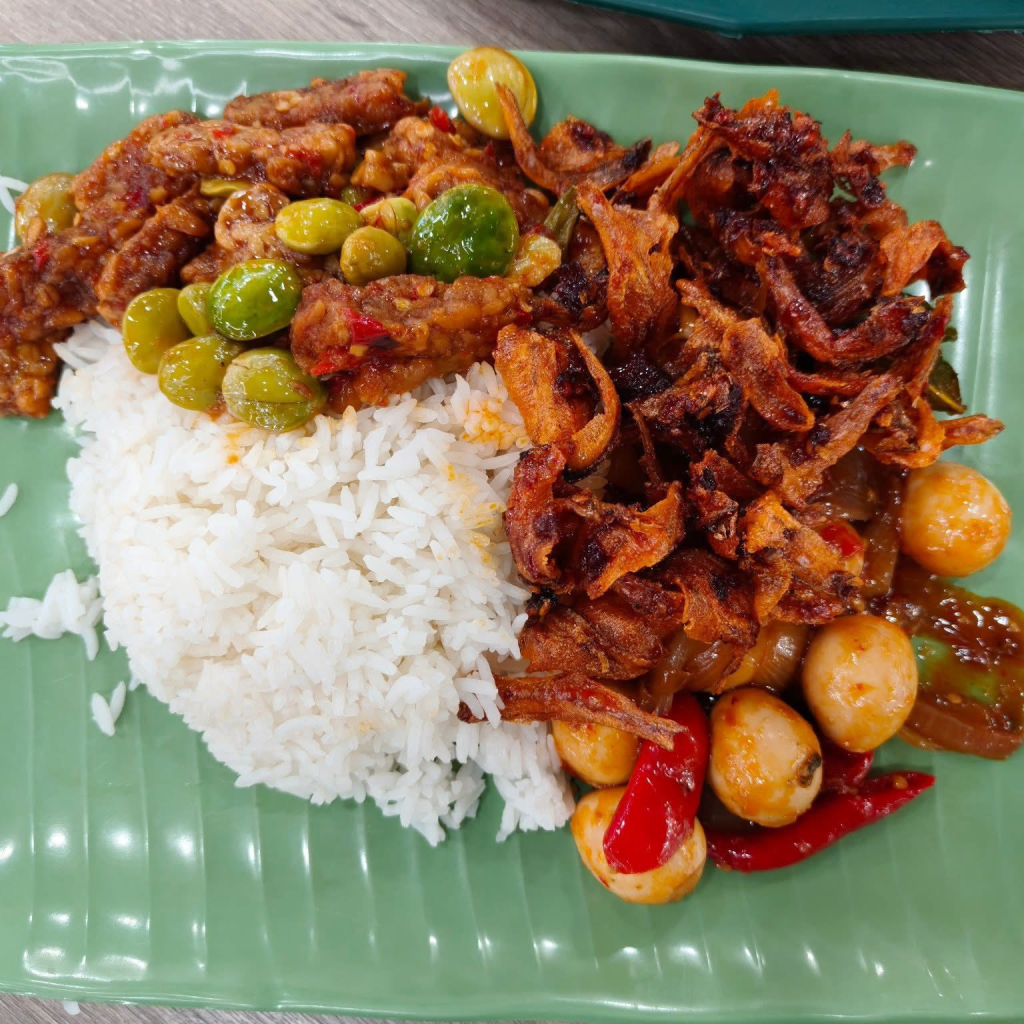Nasi Padang at Jurong Point Sparks Outrage Over Sky-High Prices
A recent social media post has left many Singaporeans fuming after a diner shared their receipt revealing a whopping S$13.20 bill for a nasi padang meal with no meat at Majulah Nasi Padang, located inside Cantine at Jurong Point. The meal included tempeh petai, quail eggs, and ikan kering, with the diner pointing out that ikan bilis alone was charged at an eye-watering S$3.80. “First-world nasi padang, first-class price,” the diner wrote, expressing disbelief at how a simple meal could cost so much in a mall food court.
Netizens Weigh In: “Affordable Meal or Daylight Robbery?”

The post quickly went viral, racking up hundreds of comments as Singaporeans debated whether such prices were justified. Some argued that mall-based food stalls face high rents and costs, making premium pricing unavoidable. “Rental at shopping centres is crazy. You eat there, you pay lah,” one user commented. Others noted that nasi padang, which involves elaborate cooking methods for dishes like sambal, rendang, and curries, typically costs more than Chinese economic rice.
However, many felt the price was simply outrageous, especially for a meal without any meat. One diner shared, “I’d accept something below $10. But $13 for tempeh and quail eggs? This is absurd!” Another commenter observed that prices have crept up significantly in recent years, with simple meals now costing almost double what they did a decade ago.
Locals Share Similar Experiences of Price Shock
Dozens of Singaporeans chimed in with their own stories of expensive nasi padang meals. One said they paid over S$20 for just three dishes at the same stall, while another recounted buying nasi padang in Ubi canteen for S$12-14 despite it being an industrial area. Others shared that in Johor Bahru, similar meals with beef rendang and multiple sides cost under S$12, highlighting the stark price difference just across the Causeway.
Some commenters pointed out that even dishes like ayam penyet and nasi briyani are now priced close to S$10 at hawker centres — once seen as affordable options for the average Singaporean. This has led to growing concern that even traditional local favourites are becoming luxury meals, out of reach for lower-income families.
Calls for Greater Price Transparency and Accountability
Several netizens urged nasi padang stalls, especially those in malls, to clearly display their prices on prominent boards or digital menus to prevent misunderstandings at the cashier. One suggested that the National Environment Agency (NEA) or other authorities should enforce rules requiring food stalls to indicate individual item prices upfront. “We need transparency so customers know what they’re paying for. No more nasty surprises,” a commenter wrote.
Others went further, calling for a boycott of overpriced stalls until they adjust their pricing or improve communication with customers. Some diners speculated that inconsistency in pricing could be due to staff errors or deliberate overcharging, suggesting consumers keep their receipts and clarify questionable charges immediately.
Debate Over Rising Food Prices and Cost of Living
This nasi padang incident has reignited broader conversations about food security, inflation, and affordability in Singapore, especially as more Singaporeans tighten their belts amid rising rents, utility costs, and stagnant wages. Some commenters expressed fear that if even hawker fare becomes unaffordable, it could erode one of Singapore’s defining cultural icons — its diverse, accessible food culture.
While some Singaporeans defended the stall, saying costs like fresh ingredients, cooking time, and food court overheads justify higher prices, others insisted that pricing should remain reasonable so everyone can enjoy a decent meal without financial strain. As one netizen aptly put it, “If nasi padang becomes a luxury, what hope is there for affordable food in Singapore?”
With many voices joining the debate, this viral nasi padang story has struck a chord with Singaporeans concerned about the rising cost of living — and could be a sign that more diners will be demanding fairer prices, greater transparency, and accountability in the future.
